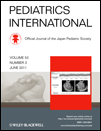Reappraisal of MMR vaccines currently used in Korea
Abstract
Background: Although MMR vaccine is widely used in Korea, there are limited studies on the currently used vaccines. We evaluated the immunogenicity and safety of MMR vaccines in Korean children.
Methods: For first and second dose immunization, children aged 12–23 months and 4–6 years were enrolled. All subjects received a single dose of either Priorix™ (Glaxo Smithkline Biologicals, Rixensart, Belgium) or MMRII® (Merck & Co., Inc., West Point, PA, USA). Pre- and postvaccine sera were collected from all participants. Antibody levels were determined by ELISA (Enzygnost®; Dade Behring, Schwalbach, Germany). Safety monitoring included local adverse events for 5 days and systemic adverse events for 42 days following vaccination.
Results: One hundred twenty-one subjects were enrolled in the 12–23 months age group and 39 in the 4–6 years age group. The seroconversion rate in the 12–23 months age group was 97.9–100.0% for measles, 85.1–88.9% for mumps and 100.0% for rubella. All children 4–6 years of age previously seronegative showed seroconversion for measles, mumps and rubella. Local adverse events were reported in 8.3–16.1% (12–23 months age) and 27.8–31.6% (4–6 years age), and 40.0–48.2% (12–23 months age) and 42.1–61.1% (4–6 years age) experienced at least more than 1 systemic adverse reaction. No vaccine-related serious adverse events were reported. Among the same age groups, there was no significant difference in adverse events between the two vaccines.
Conclusion: The MMR vaccines are safe and show good immunogenic responses in children. These data will be invaluable when we introduce diverse vaccines in the following future.




